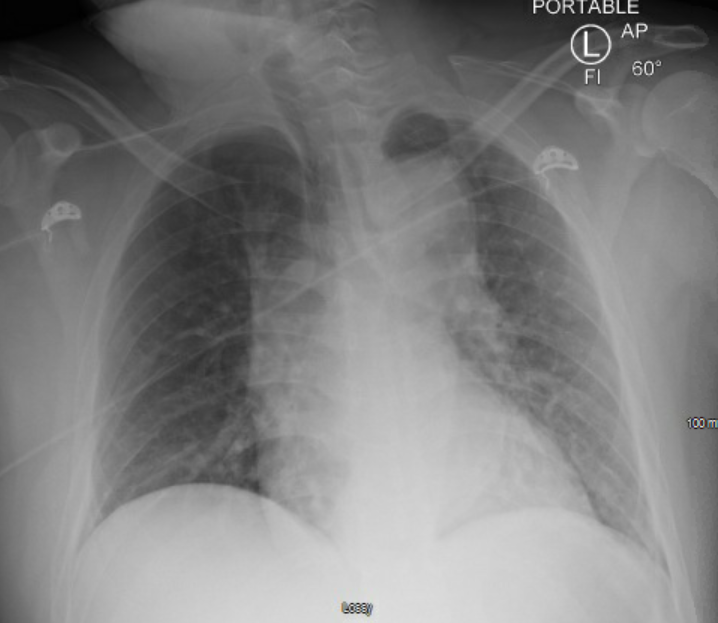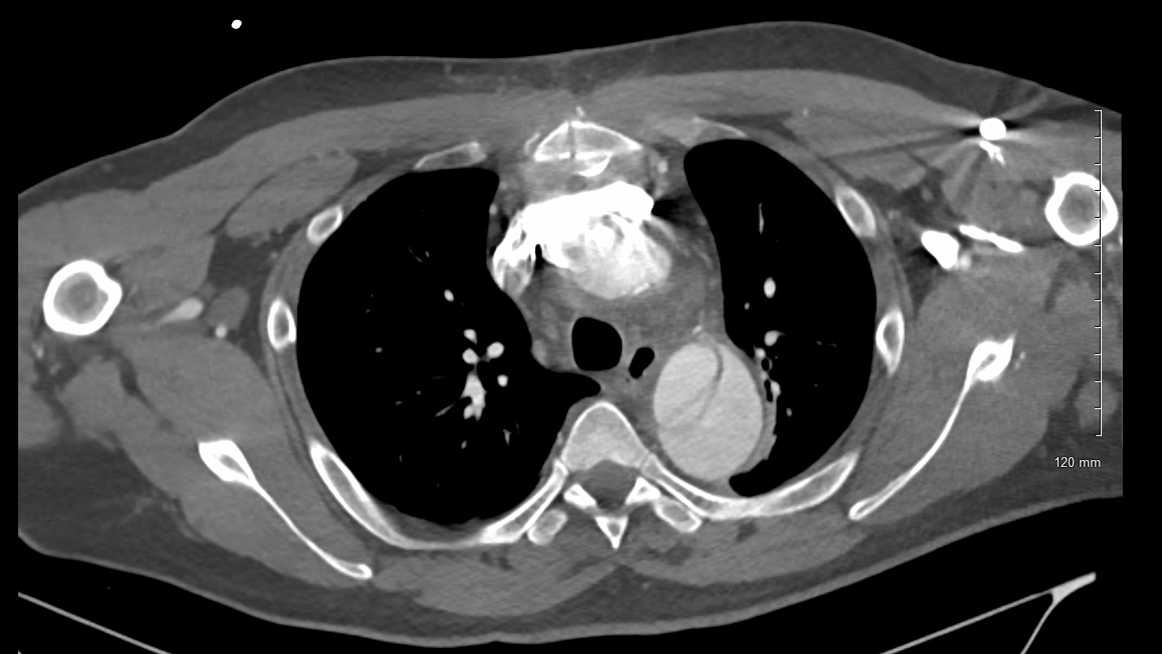Case Presentation: This is a 37-year-old Cambodian male with a past medical history of chronic untreated hypertension and recent methamphetamine use presents with acute onset “tearing” chest pain. Physical exam was remarkable for tachycardia and tachypnea with increased work of breathing. In addition, the patient appeared in severe distress. CT examination showed that he had a Stanford’s Type A DeBakey Type 1 aortic dissection originating from the thoracic aorta and extending to the external iliac arteries. Patient underwent interposition tube graft for his aortic tear followed by cardioversion along with innominate artery reimplantation into the tube graft. During his procedure it was noted he had a very large false lumen. The entry point of the tear was identified just distal to the innominate artery. The patient tolerated the surgery well and was transferred to the ICU for stabilization then transitioned to the medical service. During his medical admission, medical management was optimized where he was placed on a statin, aspirin, and metoprolol. Social services was also consulted and utilized to assist patient in drug addiction therapy and cessation of his drug use.
Discussion: Aortic dissections are usually fatal events with significant morbidity and mortality especially over the first several hours thus making early diagnosis and treatment crucial. Aortic dissections have been reported with a number of conditions particularly hypertension. Although aortic dissection mostly presents in the older age group, it can occur in the young adults especially if related to connective tissue disease, vascular inflammation, genetic vascular diseases or even trauma. Methamphetamine, a highly potent stimulant of the central nervous system, works by increasing the postsynaptic concentrations of dopamine and norepinephrine. Although it can affect many organs the most pertinent has been seen on the cardiovascular system due to (its ability to cause) profound hypertensive crises. In meth users, the pathophysiology behind its predisposition of its users to aortic dissection, is likely because of causing an sudden acute increase in blood pressure thus predisposing them to tears. With the dramatic increase in the use of methamphetamine, the number of complications associated with its use such as seizures, cardiomyopathy, ruptured aneurysms have come to the attention. Acute aortic dissection associated with methamphetamine use is known, however only a handful cases have been reported. Studies dating as far back as the 1990s have been looking into this association and have reflected a small but significant percent of cases.
Conclusions: Aortic dissections can occur in young adults without clear stigmata of connective tissue disease, inflammatory conditions or genetic vascular disease. This case illustrates yet another rare example of the association of aortic dissection and methamphetamine use. It is imperative that when treating a young adult patient with acute aortic dissection to investigate current recreational drug use. This case also serves as a helpful reminder when evaluating young adults with meth use that they are predisposed to vascular stress.


